Singapore noodles, also known as Singapore mei fun (星洲炒米粉), is a popular Chinese takeout dish made with rice noodles, chicken, shrimps, char siu, veggies, and seasoned with curry powder, which gives it its iconic yellow color. It's actually quite easy to make, takes 30 minutes or less, and our recipe will make sure it taste just as good as takeout! Complete the meal with some egg drop soup and egg rolls or crab rangoons!
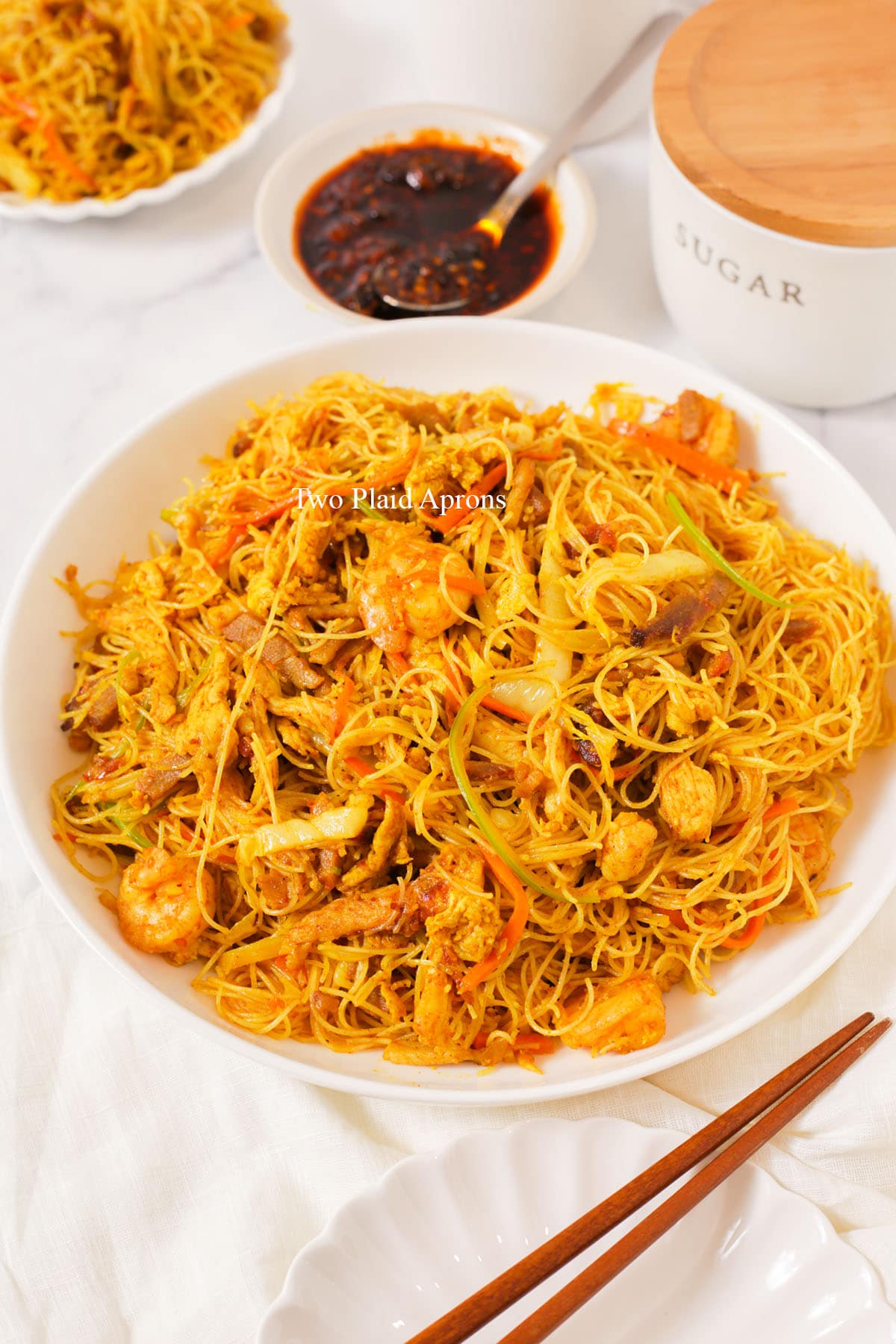
If you’ve made this recipe or any recipes from our blog, please tag us on Instagram using #twoplaidaprons! You can also tag us in your Instagram stories using @two_plaid_aprons. We would love to see your creations! It absolutely makes our day! 🥰
Jump to:

What is Singapore noodles?
Singapore noodles, also known as Singapore mei fun (星洲炒米粉) or Singapore mai fun, depending on the translation, is a popular rice noodle dish seasoned with curry powder and loaded with chicken, shrimps, Chinese BBQ roast pork, and veggies. You can find it at most Chinese restaurants and even sometimes even for dim sum!
The origin of Singapore noodles is not clear, however, unlike what its name suggests, this stir fried rice noodle is not Singaporean at all! Most argue that it originated from Chinese restaurants in Hong Kong and others think it's from Maylasia.

Ingredient notes
Please scroll down to the recipe card for the ingredient quantities!
- Thin rice noodles - Sometimes also known as rice vermicelli and there are quite a few brand varieties. We usually use this Wai Wai brand. These rice noodles are super thin, tender with a bounce, and cook really quickly.


- Eggs - Scrambled eggs add extra fragrance to Singapore mei fun, making it extra flavorful.
- Garlic - This adds a nice touch of garlic flavor, which makes the noodles more flavorful and aromatic.
- Chinese BBQ roast pork - Also known as char siu. You can easily make it yourself (takes only 1 hour and the rest is all marinating time!) or use store-bought ones.
- Marinated proteins - The other two proteins usually used in Singapore noodles are chicken and shrimps. They are marinated with water, shaoxing rice wine, salt, cornstarch, and a little oil. These ingredients season and protect the protein while they are being cooked.
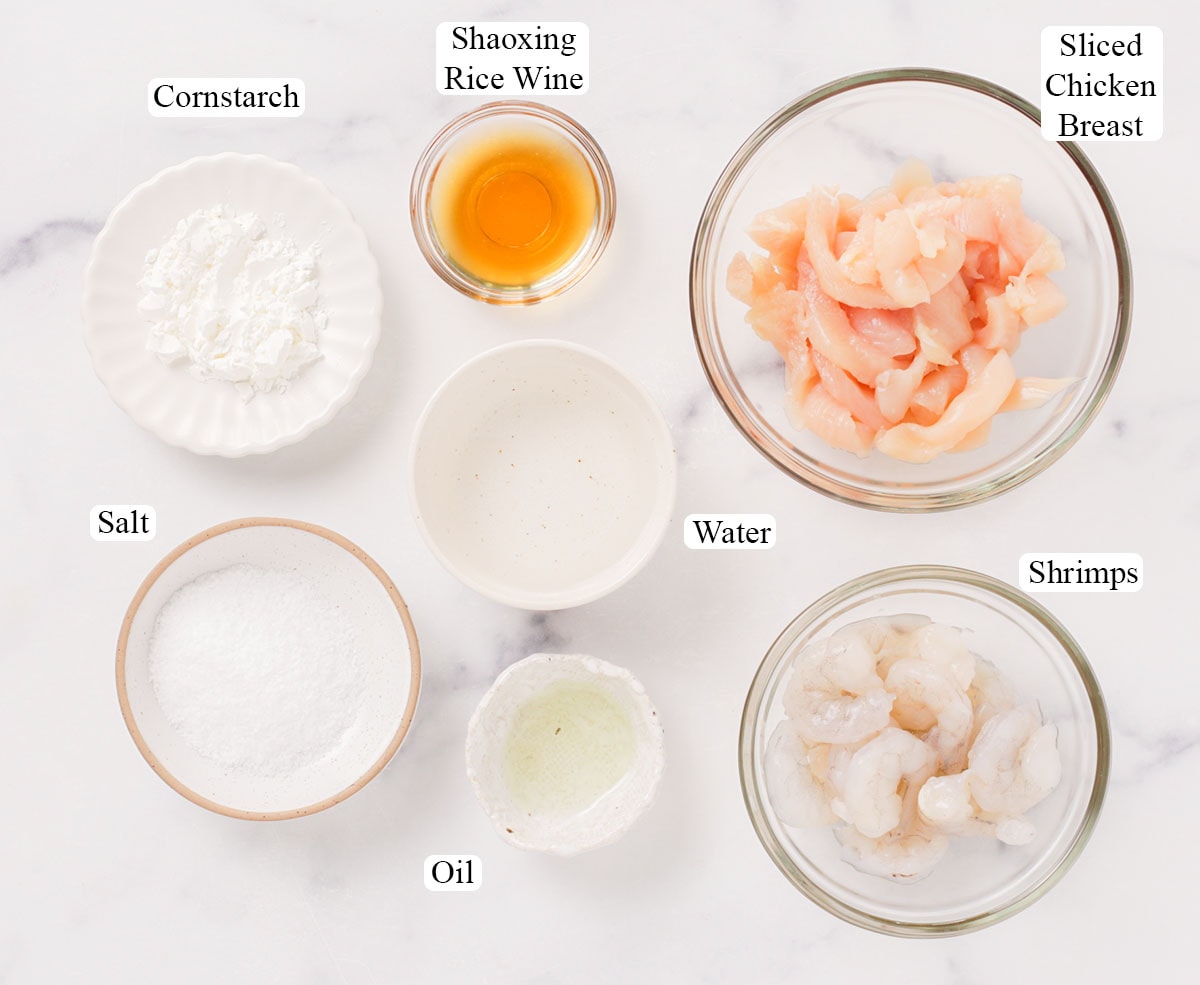
- Vegetables - The typical vegetables Chinese restaurants use in Singapore mei fun are napa cabbage, carrots, and celery.

- Shaoxing rice wine - This is a pantry stable for Chinese cooking. It'll make the Singapore noodles extra fragrant and flavorful.
- Curry powder and ground turmeric - Curry powder is the main flavoring for Singapore noodles, and some brands are yellower than others. If your curry powder doesn't give off enough yellow color and you want that iconic yellow, add some ground turmeric.
- Seasonings - Besides curry flavor, this noodle dish is also seasoned with some oyster sauce, chicken bouillon powder, salt, and sugar.
- Chili oil - Using chili oil is totally optional to add more flavor and a little heat to the Singapore noodles. We like to use our Chinese chili oil and garlic chili oil for max flavor.
- Cooking oil (any neutral oil)

Gluten-free alternatives
This Singapore noodles recipe is almost gluten-free and you can easily make it so by substituting two ingredients — Shaoxing rice wine and oyster sauce!
If you don't mind using alcohol, mixing half dry sherry with half water is the best substitute for the rice wine. This keeps the extra fragrance and flavor the wine provides. As for the oyster sauce, simply use gluten-free oyster sauce (look for the green labels).

How to make Singapore noodles
Please scroll down to the recipe card for the full recipe and instructions!
Prepare the ingredients:
1. Soak the noodles. Cover the rice noodles with room temperature water and allow them to soak for 10 to 15 minutes, until they are soft, or according to the package instructions. Once soft, drain and set aside.


2. Marinate the proteins. In a mixing bowl, combine the chicken, shrimps, water, Shaoxing rice wine, and salt. Mix until well combined and the liquid is mostly absorbed.
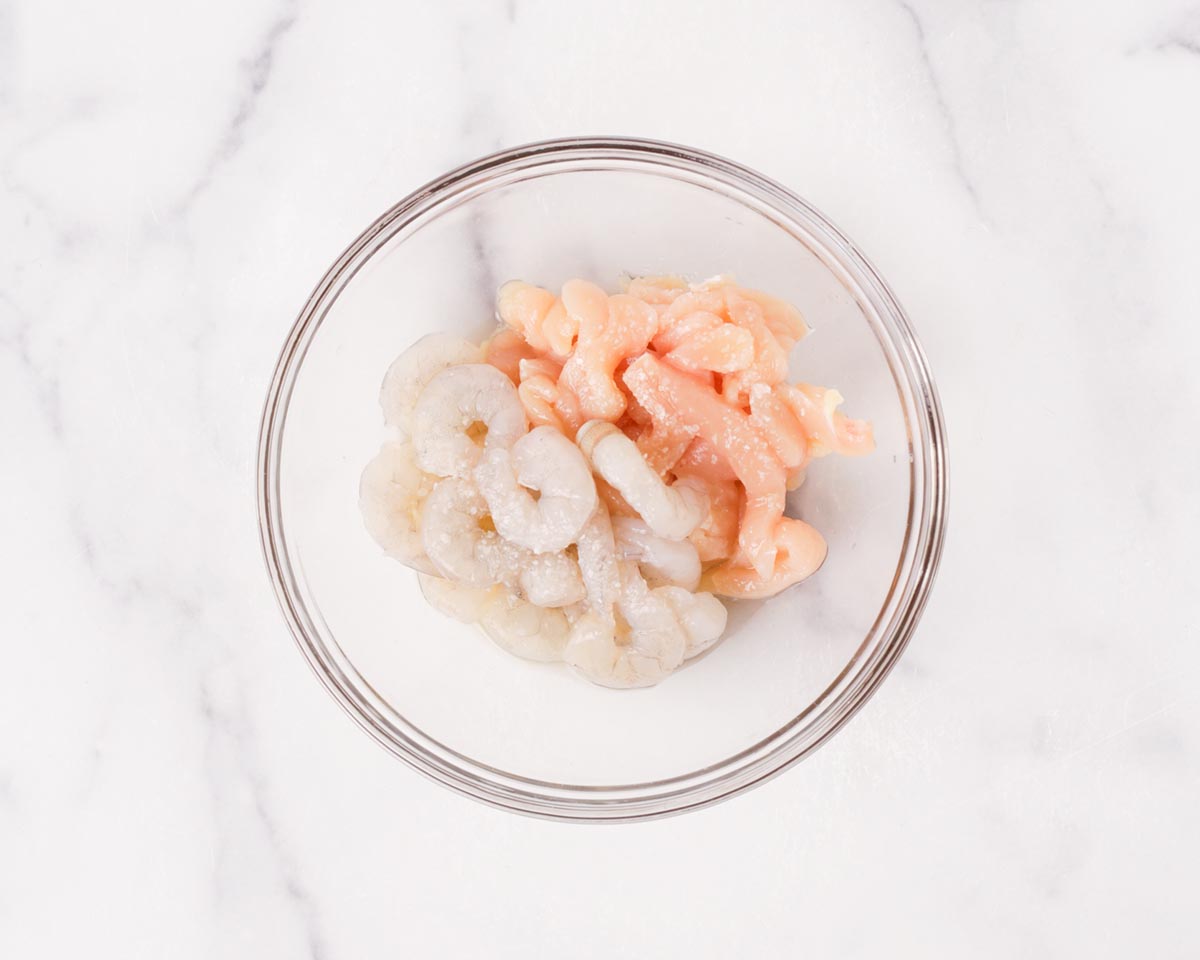
Add the cornstarch and mix until no more dry cornstarch is visible. Finish by mixing in the oil. Set aside to marinate while you prepare the other ingredients.
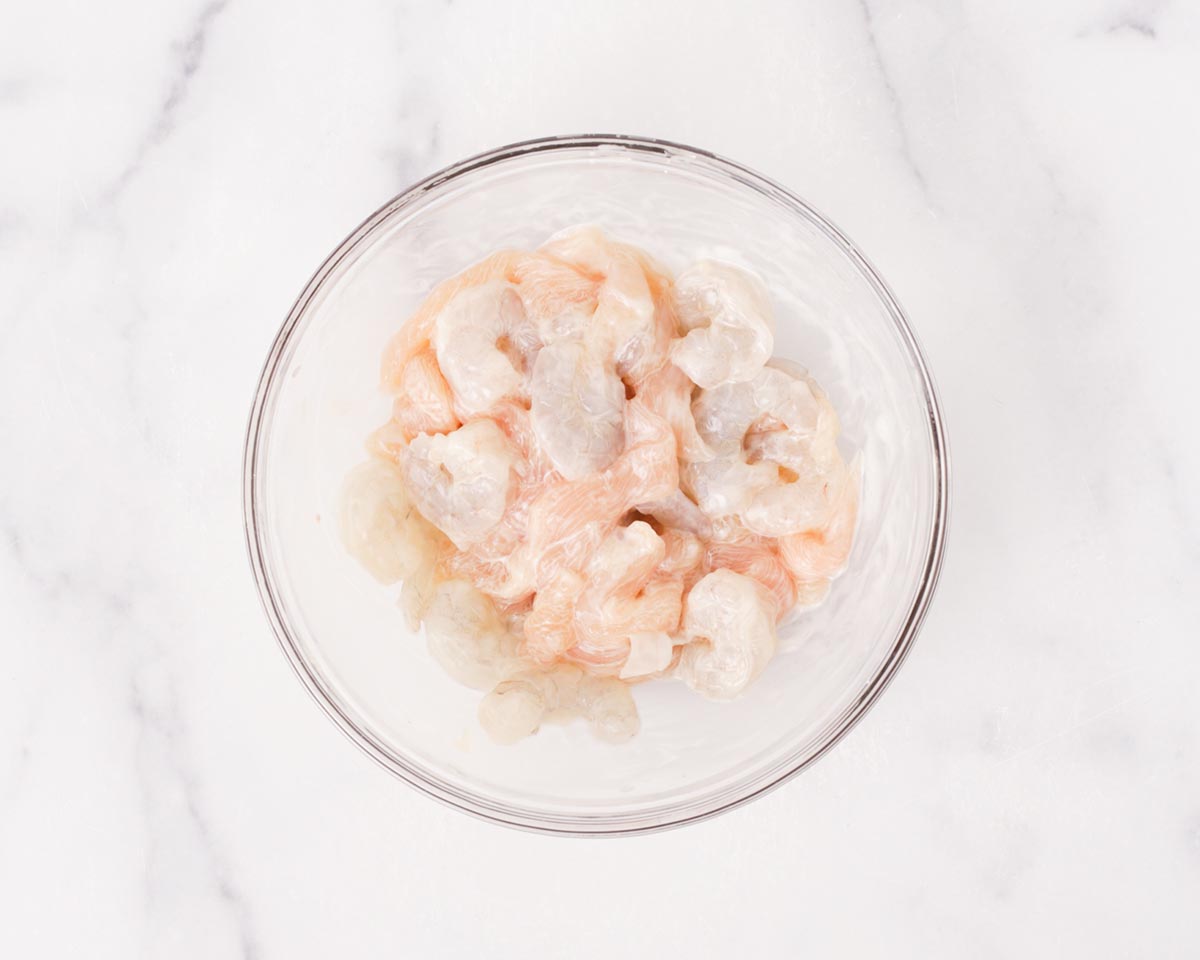
3. Cook the proteins. Bring a pot of water to a boil. To the boiling water, add all of the marinated proteins at one time and immediately stir vigorously with a fork or chopsticks to break it apart.
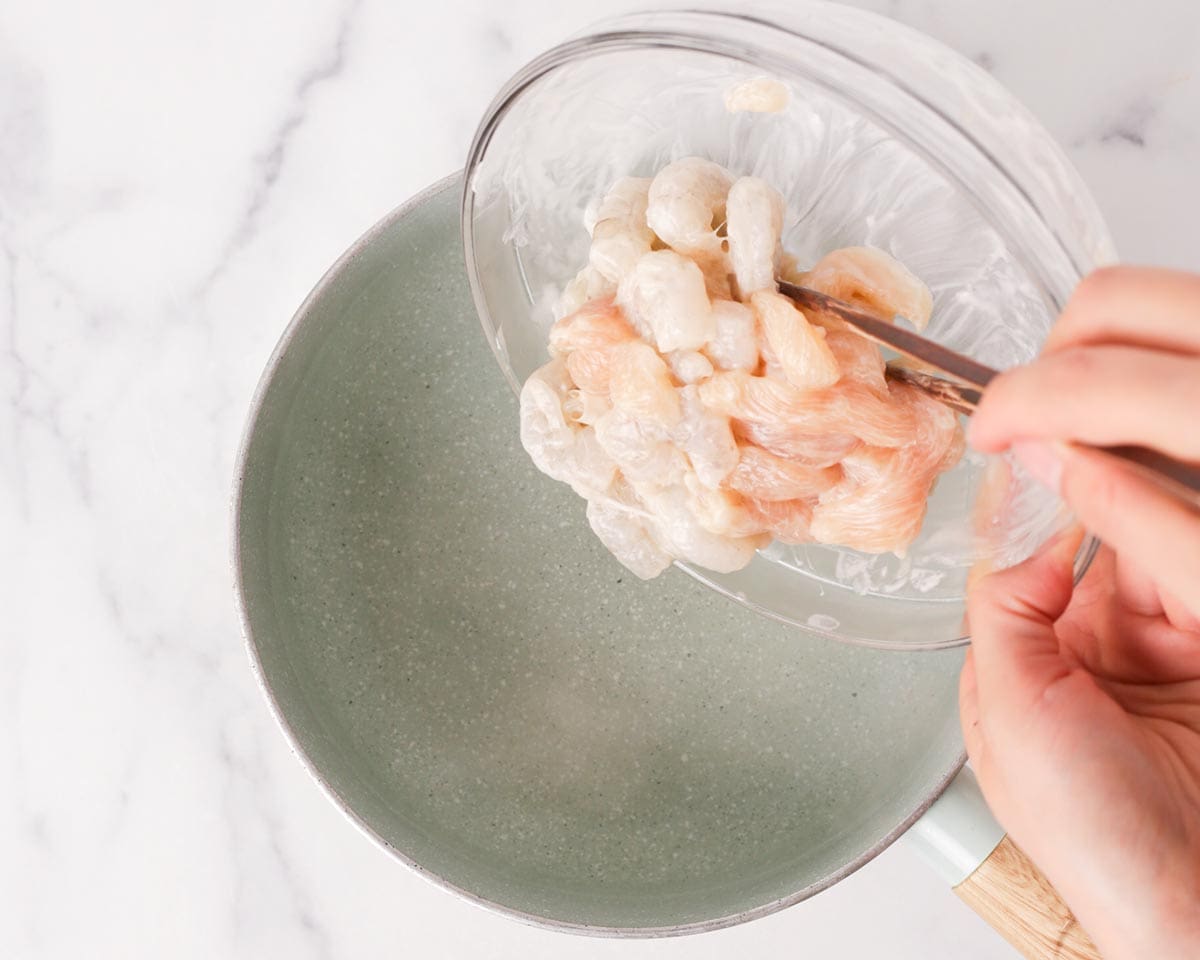
Allow the proteins to cook until the shrimps are bright pink-ish orange and the chicken cooked. Strain and set aside. Keep the pot of water hot on the back burner.

4. Scramble the eggs. In a wok or large pan over medium high heat, add a couple tablespoon of oil. Once hot, add the eggs and scramble until cooked. Remove and set aside until needed.

Make the Singapore noodles:
1. Saute the garlic. In the same wok or pan over medium high heat, add a couple tablespoon of oil. Once hot, add the garlic and sauté until fragrant, about 10 to 15 seconds.

2. Cook the roast pork and veggies. Add the char siu (roast pork) and stir fry briefly, about 5 to 10 seconds.

Then add the veggies and stir fry briefly, about 5 seconds.
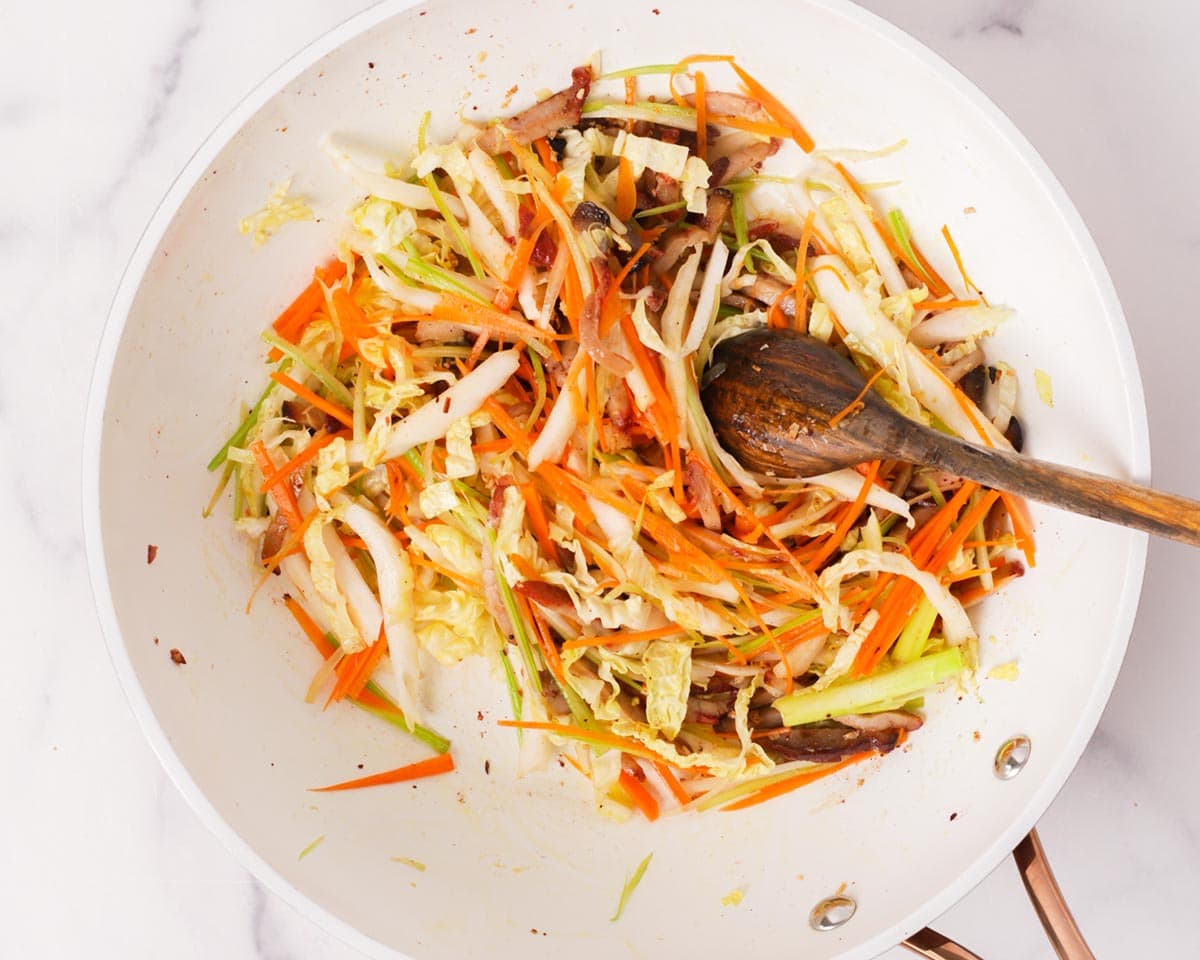
Add the cooked chicken, shrimps, and eggs and toss to combine.

3. Add the rice wine. Drizzle in the Shaoxing rice wine and stir fry until fragrant and the alcohol is cooked off, about 15 seconds.

4. Season. Add the curry powder, ground turmeric, oyster sauce, chicken bouillon powder, salt, sugar, and chili oil. Mix and stir fry until well combined. Set the wok/pan aside for a brief moment as you prepare the rice noodles.

🌟Pro tip: If at this point too much moisture was cooked out of the veggies and the "sauce" looks too thick/dry, add a couple tablespoons of water to help thin out the "sauce" for easier coating.
5. Prepare the rice noodles. Into the pot of hot water on the back burner, add the soaked rice noodles. Stir for a couple of seconds and promptly drain the noodles well.


📝 Note: If possible, we recommend dipping the noodles into the hot water as close as possible to this step. Blanching the noodles too early will cause the noodles to clump up, making it really hard to toss and distribute the sauce evenly.
6. Enjoy. Add the noodles into the wok, along with the green onions, and move the wok back onto the heat.

Stir fry and toss until everything is well combined and the noodles are evenly coated and colored. Add more chili oil on top if you'd like and enjoy!

Recipe tips
- Keep the heat high. The best way to prepare Singapore mei fun is to cook in a wok over flame. To imitate restaurant cooking, it is important to cook over high heat (in this case, medium-high). This helps to cook everything quickly, yet does not evaporate all the moisture from the veggies, which is essential for thinning out the "sauce" that coats the noodles.
- Add a little water if needed. In case if the moisture in the vegetables evaporate too much and the "sauce" looks dry, add a couple tablespoon of water to help thin it out.
- Don't overcook the rice noodles. Because these rice noodles are really thin, they can overcook very quickly. So simply dip the soaked rice noodles into the pot of hot water for a few seconds and remove promptly.
- Avoid blanching the noodles too early. Once the noodles are dipped in the hot water, it will clump together as it sits. So we highly recommend waiting as close to when you need to add the noodles to the wok before blanching.
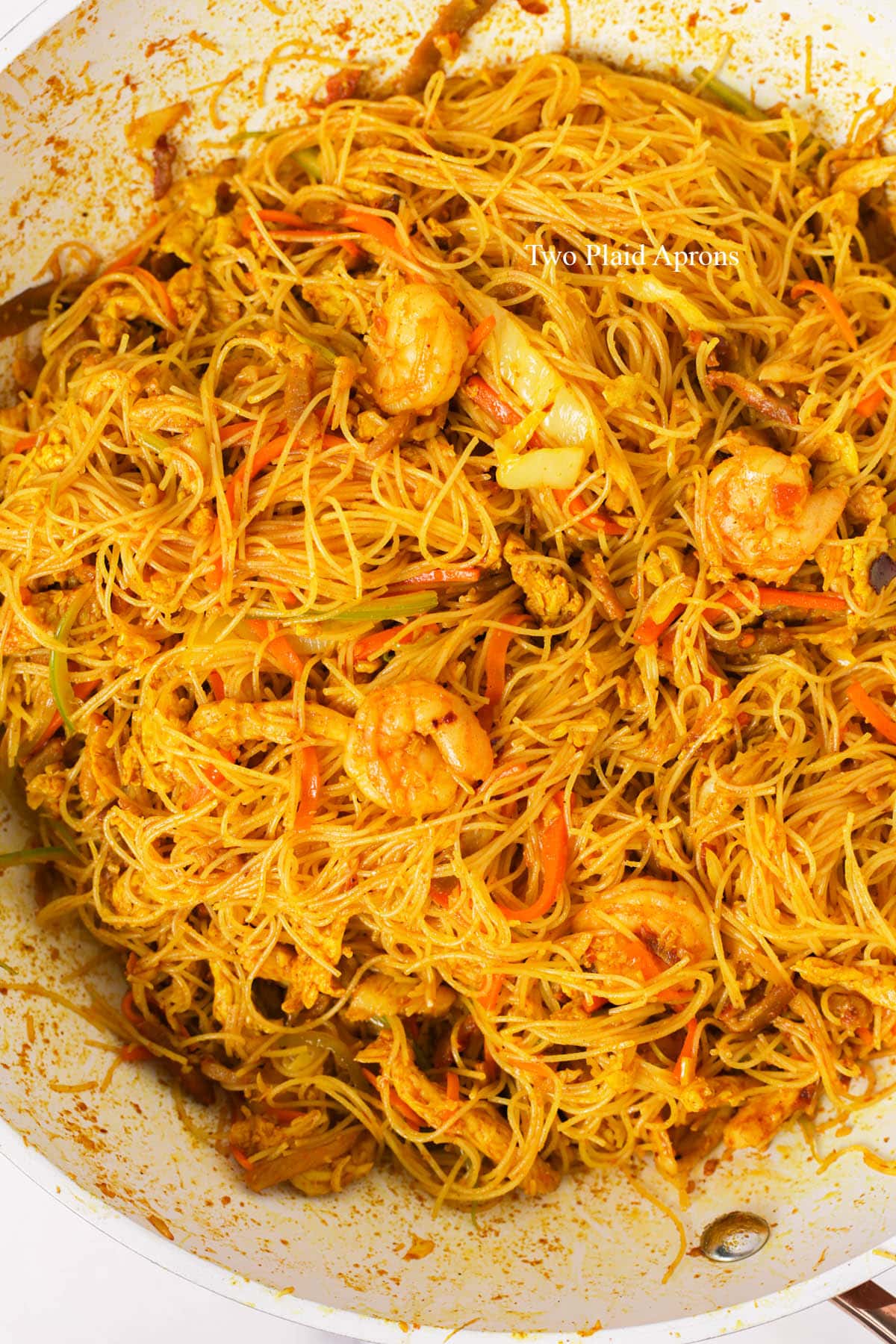
Storage
Leftover Singapore noodles can be stored in the fridge for up to 3 to 4 days. Just make sure the noodles are completely cooled before covering and storing.
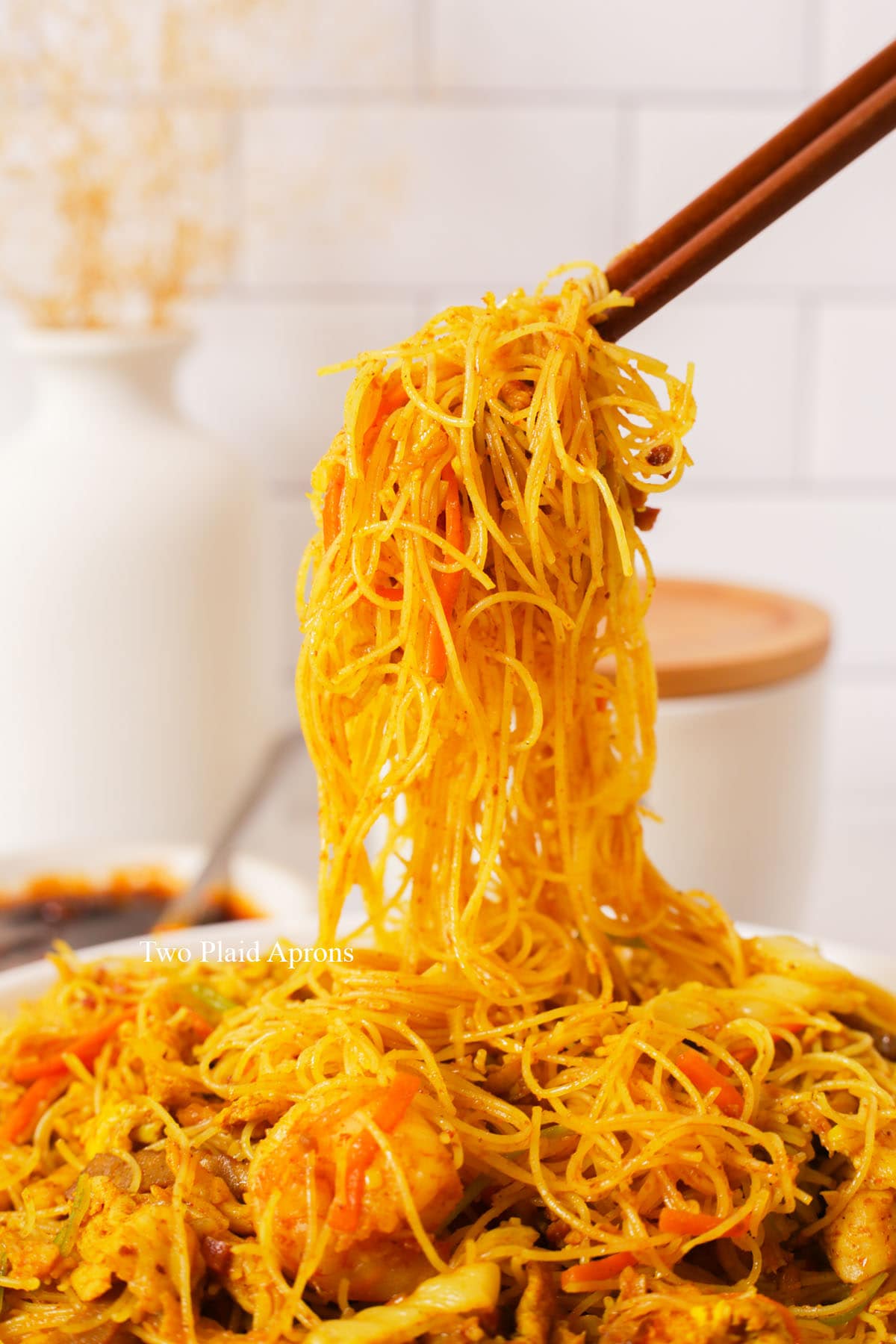
Reheating
Refrigerated leftover Singapore noodles can be easily reheated in the microwave or on the stovetop.
Microwave method: Place the noodles in a microwave safe container and cover loosely. Microwave until heated through. If needed, stir and toss the noodles in between heating to distribute the heat.
Stovetop method: Place the Singapore noodles into a pan over medium high heat. Add a couple tablespoons of water to the noodles depending on how much is being reheated. Toss and stir fry until the noodle are heated through.

FAQ
Singapore noodle is made of thin rice noodles, chicken, shrimp, roast pork, eggs, and veggies. The main flavoring is curry powder.
Once of the biggest difference between the two is that Singapore noodles is made of rice noodles, while chow mein is made with thin egg noodles made of wheat flour. As for the seasoning, Singapore noodles are known for its curry flavor which is from curry powder, and chow mein's main seasoning is soy sauce, like in this Cantonese chow mein.
Shaoxing rice wine is a Chinese pantry stable and can be found at most Asian markets. If you can't find it, dry sherry mixed with with half water is a good substitute. Unfortunately, there's no good non-alcoholic substitutes. In this case, you can just replace the rice wine with water. The Singapore noodles won't be as fragrant, but it will still taste great!
📖 Recipe
Singapore Noodles (Singapore Mei Fun)
Ingredients
For the dish:
- 6 ounces thin rice noodle
- 2 large eggs beaten
- 1½ tablespoons garlic minced (about 3-4 cloves)
- 3 ounces Chinese BBQ roast pork cut into thin strips (homemade or store-bought) *see notes
- 2 leaves napa cabbage cut into thin strips width-wise
- ½ large carrot peeled and cut into matchstick piece
- 1 stalk celery cut into thin matchstick pieces
- 1 tablespoon Shaoxing rice wine
- 1½ tablespoons curry powder more or less to your preference *see notes
- 1 teaspoon ground turmeric optional for color *see notes
- 1 tablespoon oyster sauce
- 1½ teaspoon chicken bouillon powder
- 1 teaspoon salt
- ½ teaspoon granulated sugar
- 1 tablespoon Chinese chili oil optional (homemade or store-bought)
- 2 stalks green onion just the green parts cut into 2 inch pieces (optional)
- Oil any neutral oil (as needed for cooking)
For the marinated proteins:
- 3 ounces skinless boneless chicken breast cut into thin strips
- 3 ounces small shrimps peeled and deveined
- ½ tablespoon water
- ½ teaspoon Shaoxing rice wine
- ½ teaspoon salt
- 2 teaspoon cornstarch
- ½ teaspoon oil any neutral oil
Instructions
Prepare the ingredients:
- Soak the noodles:Cover the rice noodles with room temperature water and allow it to soak for 10 to 15 minutes until softened or according to the package instructions. Once the noodles have softened, drain and set aside.
- Marinate the proteins:Into a mixing bowl, combine the chicken, shrimps, water, cooking wine, and salt. Mix until most of the liquid is absorbed. Add the cornstarch and mix until no more dry cornstarch is visible. Finish by adding the oil and mix to combine. Set aside to marinade while you prepare the other ingredients.
- Cook the proteins:Bring a pot of water to a boil. To the boiling water, add the marinated chicken and shrimps all at one time and immediately stir vigorously with a fork or chopsticks to separate the proteins. Allow the proteins to cook for about 30 second to 1 minute, until the shrimps are bright pink-ish orange and the chicken is cooked through. Strain the cooked protein and set it aside. Keep the pot of water hot.
- Scramble the eggs:In a wok or large pan over medium high heat, add about 2 tablespoon of oil. Once the oil is hot, add the beaten egg and scramble until cooked. Remove and set aside as needed.
Stir fry the Singapore noodles:
- Into the same wok or pan over medium high heat, add about another 2 tablespoons of oil. Once hot, add the garlic and sauté until fragrant, about 15 seconds.
- To the wok, add the roast pork and stir fry briefly, about 5 to 10 seconds. Then add the veggies (napa cabbage, carrot, and celery). Stir fry briefly to combine.
- Add the cooked chicken, shrimps, and egg into the wok and give everything a toss to combine. Drizzle the Shaoxing rice wine around the wok and stir fry until fragrant and the alcohol is cooked off, about 15 seconds.
- Season with curry powder, ground turmeric, oyster sauce, salt, sugar, and chili oil. Stir fry and mix until well combined and the veggies starts to wilt. Set the wok/pan aside briefly while the noodles are being prepared.
- Add the soaked rice noodles into the pot of hot water and stir. Then drain the noodles well. This is to soften the noodles to get a better texture. It'll only take a brief moment.
- Add the noodles to the wok/pan, along with the green onions. Place the wok back onto the heat and toss and mix until everything is well combined and the noodles are even in color.
- Top with more chili oil if you want and enjoy!
Notes
- Chinese BBQ roast pork - Also known as char siu. You can easily make it yourself or use store-bought ones. Char siu can usually be found at large Chinese markets, like 99Ranch, and some Chinese restaurants. If using store-bought char siu, request for the sweet honey glaze to be on the side. This will help prevent the roast pork from burning when cooking
- Curry powder - Curry is an essential flavor in Singapore mei fun, and depending on the brand, the curry flavor can vary in potency. So feel free to use more or less to your liking.
- Ground turmeric - Depending on the brand of curry powder, the signature yellow color of this noodle dish can vary. If you'd like to achieve the iconic yellow color, add some ground turmeric to the curry powder.


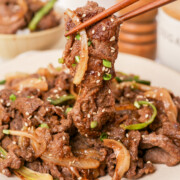

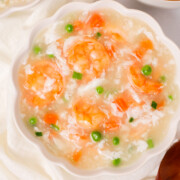
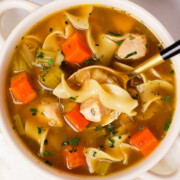
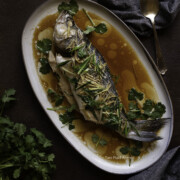


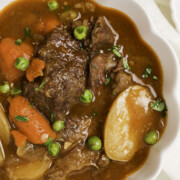
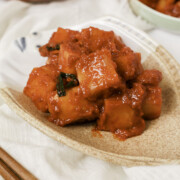
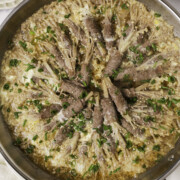
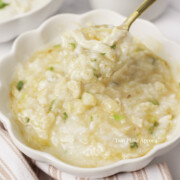





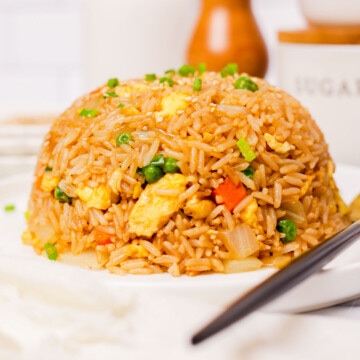
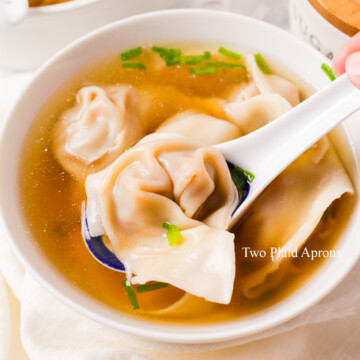
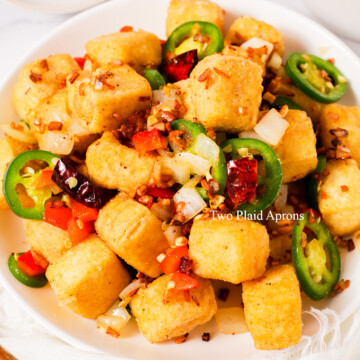
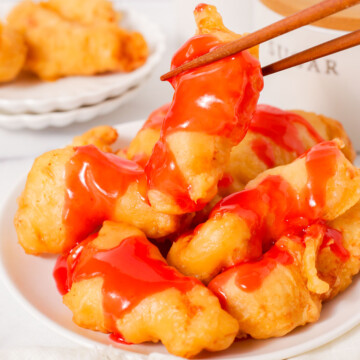
Comments
No Comments